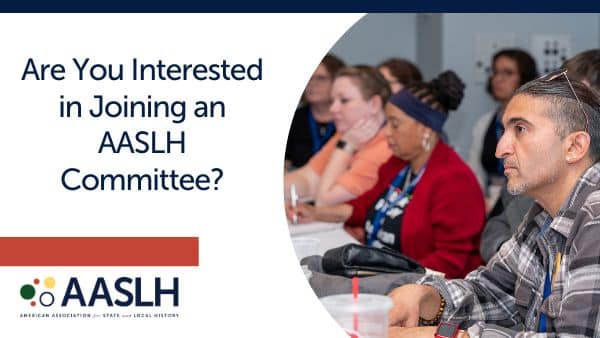
By Bethany L. Hawkins, AASLH Chief of Operations
I have worked full-time in the history field for over twenty-seven years. My first job was at a small historic house museum. We had three full-time staff members and depended on our volunteer board for financial oversight, strategic planning, and fundraising. They also helped with our educational tours and special events. By the time I left, I realized more and more that despite their enthusiasm for the place and willingness to volunteer their time, the board really had no idea what the staff really did on a day-to-day basis. They understood the business part of my work (paying bills, filing sales tax, hiring employees), but lacked knowledge about the history profession and how it is really a profession with standards, ethics, and requirements.
The current controversy with James Madison’s Montpelier has brought the question of board oversight to the national stage. “Twitterstorians” (see #FreeMontpelier) are being quite blunt about the issue of board and staff roles in response to the rolling back of years of work by Montpelier staff by a board that does not see the value in what the staff built during the last several years, including becoming a national model on working with descendant communities. Dean Krimmel, independent museum consultant and current board member for a museum, posted on Twitter on April 25: “The history museum and historic site boards I’ve worked with, all due respect, have zero understanding of contemporary museum issues, work, scholarship.” This statement made me think about my experience with history museum boards and I think Dean hit the nail on the head.
We select board members for many reasons, but generally their knowledge of museums and the history field is not the main factor. We need them to bring certain skills like financial management or the law, or we bring them on because they have deep pockets (and/or friends with deep pockets) and will donate to our organization. But how many of us train our boards so they have a deeper understanding of and appreciation for the work we do?
When I worked at the historic house museum, I started adding “history minutes” to the board meeting agendas where I would spend five minutes or so talking about some interesting aspect of the history of the site, the people who lived and were enslaved there, or artifacts in the collection. These minutes were supposed to be educational for the board, but they fed into their interests. Most of the members liked history and liked hearing the stories. But now I wonder if that was a waste of time. How much more beneficial would that time have been if I focused it on history practice, ethics, and hot topics in the history field?

Here are five things that you can try with your board to educate them about our field and where it is in 2022:
1. Bring current issues in the field to your board meeting and set aside time in the agenda to discuss them. For example, share some of the articles about Montpelier and invite them to share their opinions and listen to your opinion as a staff member.
2. Have them read AASLH’s Reframing History report or listen to one of the Reframing History podcast episodes. Follow up by talking with them during a board meeting about the process of historical thinking and why it is critical to the work you do and they support.
3. Have staff from various departments attend board meetings and talk about their work and processes. Be sure to focus on how they do their work and how it is critical to the mission of your organization.
4. Use AASLH’s Standards and Excellence Program for History Organizations (STEPS) as a training tool. I wish I had this program when I worked in a historic house. STEPS is divided into six sections: Mission, Vision, and Governance; Interpretation; Audience and Community Engagement; Stewardship of Collections; Stewardship of Historic Structures and Landscapes; and Management. Each section outlines the standards organization of all sizes should meet. Then it asks self-assessment questions so you can identify the areas in which you excel and those needing work. STEPS is a goldmine of information to show your board how the work you do is part of a larger profession guided by standards and ethics.
5. Bring in staff from other area history organizations to talk about their work and processes. This is like suggestion number 2, but there is one critical difference. It is sometimes hard for us to talk about sticky issues with our board. Having someone from outside the organization raise issues is easier. This would be most effective in a planning retreat instead of a regular board meeting. It also can help the board see the history profession as a whole and not just your site. It also highlights the collaborative nature of the history field. We do better work when we share our work with others.
I sincerely hope that you never have to deal with a situation like what’s happening at Montpelier. I also am not suggesting that any of these tips would have prevented the disaster happening at that site (I don’t think they would have), but they can help you start to think about the role of your board differently. For your organization to be successful, the board and staff must be on the same page. By adding training for your board about the work you and your staff do as historians, you improve their ability to understand the greater responsibilities they take on as a board member and hopefully create a stronger relationship between board and staff that will result in a stronger institution.



